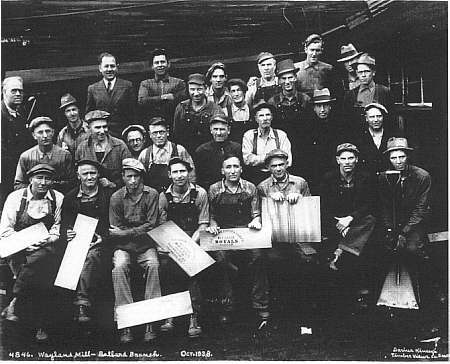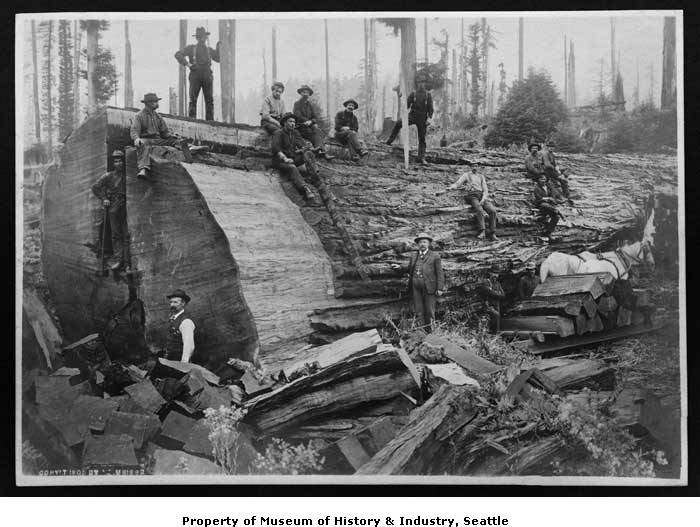The History of “Shingletown”—Part 1 of Ballard City History

Ballard has one of the most interesting industrial and maritime histories of all Seattle’s neighborhoods, and one of the reason we’ve opened Shingletown Pub and Eatery is to celebrate that history.
For starters, even many of Ballard’s own long-time residents don’t know that their neighborhood used to be an independent city, or that it was nicknamed “Shingle Town USA.” Ballard was the world’s number-one producer of shingles around the turn of the 19th century. The first shingle mill was built in 1888, right after the first lumber mill, and demand for both skyrocketed after the Great Seattle Fire in 1889. The Great Seattle Fire was one of the most devastating US city fires in history, burning down 25 city blocks, including the entire downtown business center, and causing $20 million in damage. Even though the Fire was disastrous for Seattle, it was good for Ballard, where most of the wood and shingles for the rebuild were produced. By 1904, Ballard’s ten shingle mills were producing an astounding 3 million shingles every day.

The January 15, 1909 edition of The Lumber World, a lumber trade newspaper, reported: “Ballard Output Large—The mills of that section report a splendid year, 132,000,000 feet of lumber and 1,117,000,000 shingles having been manufactured during the year just ended, and probably 25,000,000 lath.” These numbers were incredible at the time, and thousands of people flocked to Ballard looking for work, especially those displaced by the Fire. The population grew rapidly from just under 1,700 in 1890, when the town was first incorporated, to over 17,000 in 1907, making it the second largest city in King County.

Other industries were also thriving at this time in Ballard. Machine shops, metal foundries, and manufacturers were establishing themselves along the shoreline, and the fishing industry was being invigorated by the waves of Scandinavian fisherman immigrants arriving. The mounting tensions in Europe that would eventually lead to WWI, combined with rampant famine in Norway, encouraged many Scandinavians to leave their land and settle in Ballard, the geography of which reminded them of home. Though at no point in history did Scandinavians represent more than a third of Ballard’s population, their cultural influence is still felt today.

In 1917, the Hiram M. Chittenden Locks opened, and Puget Sound became accessible by Salmon Bay, Lake Union, and Lake Washington. Ballard was poised to become the nexus of the Pacific Northwest shipping industry. Shingle Town USA had become a major economic force in the region—but unfortunately this fledgling city wouldn’t last long.
